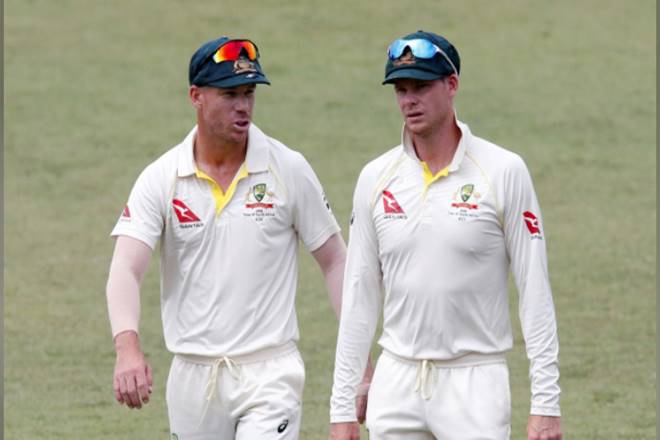Arguably the most controversial episode in modern cricket came to a possible end with Australian coach Darren Lehmann stepping down from his post. The development came a day after Cricket Australia banned former skipper Steve Smith and vice-captain David Warner from all international and domestic cricket for a year, while Bancroft was exiled for nine months for their pre-meditated plan to tamper the ball by using sandpaper in the third Test against South Africa in Cape Town. While announcing the sanctions, Cricket Australia CEO James Sutherland made it clear that discipline, consistency of behaviour and accountability for performance are all key ingredients that need to improve.
Cricket fans and administrators have to give it to Steve Smith and others for coming out and accepting what they did. The former Australian skipper took full responsibility for the ball-tampering scandal as he broke down into tears with father Peter by his side. David Warner and Cameron Bancroft too apologised for the scandal that plunged Australian cricket into turmoil.
The players have certainly done their part and will now be facing punishment for their act. However, the responsibility on part of Cricket Australia is yet to be fulfilled. Despite a heroic press-conference by Sutherland, here are a few things that remain unanswered.
1. Did Australian team’s leadership group include just 3 players?
When Steve Smith admitted to ball tampering for the first time after the end of third day’s play against South Africa, he said that the ‘team’s leadership group’ had a discussion during the break. Even though Smith didn’t name anyone, he did mention that Banger (David Warner) was there. “We had a discussion during the break and I saw an opportunity to use some tape, get some granules from rough patches on the wicket to change the ball condition. It didn’t work,” he had said.
WATCH | When Steve Smith admitted to ball tampering
“Today was a big mistake on my behalf and on the leadership group’s behalf” – Steve Smith #SAvAUS pic.twitter.com/VVIsSnJWsl
— cricket.com.au (@CricketAus) March 24, 2018
Normally, a team’s leadership group includes the captain, vice-captain, coach and a few senior players. However, Cricket Australia in its statement said that no other player in the team or coach had any idea about that plan. Going by that logic, Australian cricket team’s leadership group included just the captain, vice-captain and a 25-year-old youngster (Cameron Bancroft) who was playing his 8th Test!
In contrast, when Glenn Maxwell was fined internally by a similar collective in 2016, the leadership group included Smith, Warner and fast bowlers Mitchell Starc and Josh Hazlewood.
2. Was no bowler aware of ball-tampering?
Before putting up this question, let’s try to understand how and why ball-tampering is done.
In cricket, there are two types of swing – conventional swing, where the ball moves towards the rough side and reverse swing, where the ball starts moving towards the polished surface. To generate reverse swing, the teams have to make sure that one side of the ball remains shined while the other becomes rough. This is hard to achieve in countries like South Africa and Australia where the Kookaburra ball is used.
Ball-tampering is when players use illegal means to either polish one side of the ball or to scuff up the other side. Why is it done? To help fast-bowlers generate reverse swing.

Now, all the three Australian players banned are batsmen – two openers, one middle-order. Going by CA’s statement, while top-three Australian batsmen were busy tampering the ball, putting their careers at stake, the bowlers for whom it was being done, had no clue about it!
Somehow, it isn’t as convincing as it should be!
3. Did Steve Smith, David Warner pay price for their dispute with the establishment?
This question was asked not by us but by the former Australian captain Ian Chappell whose voice was echoed by Indian opener Gautam Gambhir. The Delhi Daredevils captain said that the harsh punishments for Smith and Warner could be the result of them being the primary voices during the senior team’s pay hike dispute with the establishment.
“While cricket needs to be corruption-free but feel sanctions on Aussies bit harsh. Are @stevesmith49 & @davidwarner31 paying for revolt for pay hike? History has it administrators deride those who standup for players’ cause. Classic case: Ian Chappell,” Gambhir said on Twitter.
This is probably something no one has paid attention to. There have been instances in the past when the players had to pay the price for raising their voice and one cannot rule out the possibility in this case either.
WATCH | When Steve Smith got emotional
Heartbreaking. Steve Smith has broken down delivering a message to young Aussie cricket fans. pic.twitter.com/l14AsvAhXz
— cricket.com.au (@CricketAus) March 29, 2018
As it stands now, Steve Smith and Warner will not play cricket for the next 12 months which means that they will not only miss IPL 2018 but will also not be a part of the Australian team when India visits them later in 2018. Their ban will end in the last week of March 2019, at a time when only two months will be left for 2019 ICC World Cup which starts on May 30.
Smith and Warner’s only chance to make it to the Australian team for the tournament would be the Indian Premier League in 2019, likely be played in the months of April and May. At stake will be their career and the future of Australian cricket.


